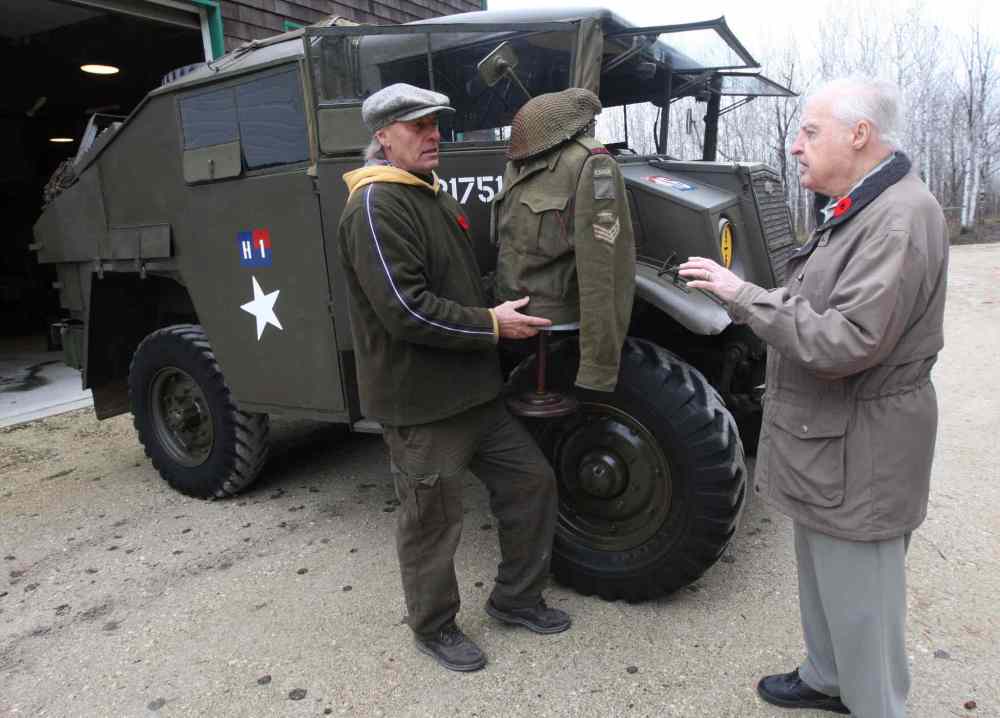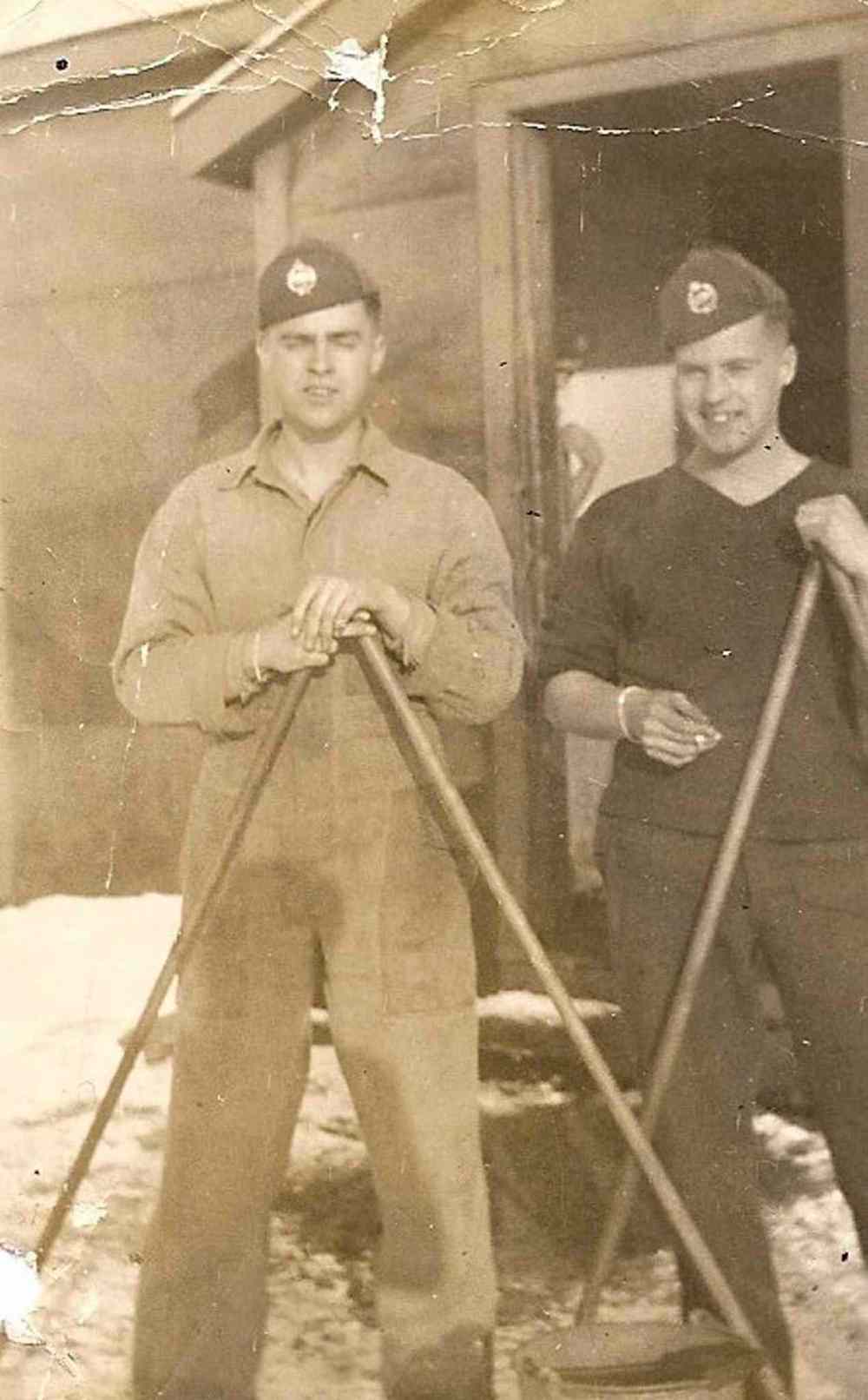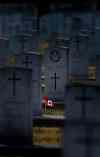Brothers, and brothers in arms
91-year-old veteran recounts 1944 battle that claimed sibling's life
Advertisement
Read this article for free:
or
Already have an account? Log in here »
To continue reading, please subscribe:
Monthly Digital Subscription
$0 for the first 4 weeks*
- Enjoy unlimited reading on winnipegfreepress.com
- Read the E-Edition, our digital replica newspaper
- Access News Break, our award-winning app
- Play interactive puzzles
*No charge for 4 weeks then price increases to the regular rate of $19.95 plus GST every four weeks. Offer available to new and qualified returning subscribers only. Cancel any time.
Monthly Digital Subscription
$4.99/week*
- Enjoy unlimited reading on winnipegfreepress.com
- Read the E-Edition, our digital replica newspaper
- Access News Break, our award-winning app
- Play interactive puzzles
*Billed as $19.95 plus GST every four weeks. Cancel any time.
To continue reading, please subscribe:
Add Free Press access to your Brandon Sun subscription for only an additional
$1 for the first 4 weeks*
*Your next subscription payment will increase by $1.00 and you will be charged $16.99 plus GST for four weeks. After four weeks, your payment will increase to $23.99 plus GST every four weeks.
Read unlimited articles for free today:
or
Already have an account? Log in here »
Hey there, time traveller!
This article was published 10/11/2015 (3707 days ago), so information in it may no longer be current.
STEINBACH – Over lunch, Stan Butterworth, 91, pulled out a black-and-white photo, smaller than a business card the way old photos once were, of him and his older brother Fred.
It was taken during a lighter moment while serving Canada in the Second World War. They had just finished latrine duty, and were now hamming it up for a photo outside the latrine they’d just cleaned.
It was one of the last photos of them together.

Fred Butterworth was gunner in the lead tank of the lead squadron entering the Dutch town of Groningen, in spring of 1945. Being lead is not necessarily a good thing when heading into battle.
Brothers Fred, 22, and Stan, 20, from Winnipeg, had joined the military together, trained together, left for overseas together, and were both gunners in the Fort Garry Horse regiment. But when it came to being deployed, the Canadian military had a policy of splitting up family members so an entire family couldn’t be wiped out in one assault. So Fred was in B Squadron, and Stan was in A Squadron.
Fred’s tank rumbled through the occupied city of Groningen, with row housing on one side and a sports field on the other. It was a nervous time. You didn’t know where the enemy was hiding. Suddenly, a German soldier jumped from between the buildings, raised a bazooka to his shoulder, and shot straight into the tank’s turret where the gunner, Fred, was stationed. “A Sherman tank is not a heavy tank and doesn’t have the armoured protection a lot of other tanks have,” explained Stan.
Fred was killed almost instantly. The tank veered towards the buildings and crashed. Fred’s last act was to somehow fire the tank’s cannon, shooting into the buildings and setting them ablaze.
Stan told the story while in Steinbach last week to visit some collectors of military vehicles. Rob Fast and Harold Kihn both have impressive arrays of restored military equipment. Stan was particularly interested in Kihn’s Sherman tank, one of only three in Canada still running, a near replica of the one he fought in. The Free Press tagged along to plumb Stan’s memories.
Of the three other men in that tank in Groningen, the crew commander was badly wounded, the tank operator slightly wounded, and the driver climbed out of the tank into the burning buildings only to be captured.
His capture lasted only a few days. It was a four-day battle. Canadian troops successfully liberated Groningen but at a cost of 43 Canadian lives.
The two brothers had started their combat at the Battle of the Scheldt Estuary. Allied forces were advancing quickly into Europe but running out of supplies. A contingent of mostly Canadian troops were assigned to clear the German-controled Scheldt Estuary, which blocked the port of Antwerp. The battle lasted two months, with Canadians making up half the 12,873 Allied casualties, but the Allies prevailed.
From there, they crossed to the east side of Netherlands, including Groningen. Fred was killed April 13, 1945.
Stan wrote his parents shortly after his brother’s death. “It was a difficult letter to write,” he said. “I told them just what happened, the fact that he didn’t suffer, and he was buried, and the Dutch people had placed a lot of flowers on his grave.”
This is where the term “soldiering on” comes from because that’s what a numbed Stan did. “Just carry on,” he said, when asked how he managed. “I was a member of a crew. The war was not over. We had to go on from there.”

It was the final push that ended the war. From February to May 1945, he lived out of a Sherman tank like the one stored in Harold Kihn’s garage in Steinbach. The quarters were so cramped you were always bumping against someone. At night, they slept outside beneath the tank.
One of Stan’s two sons is named after his brother Fred, and Stan has been back to the Bergen op Zoom Cemetery in Netherlands four times to visit his brother’s grave.
Groningen, a city of about 200,000, hasn’t forgotten. In 2012, a film crew arrived in Winnipeg to shoot a documentary on Stan’s brother. It’s part of an exhaustive record of those who sacrificed, compiled by a government agency called the War and Resistance Centre of Groningen. The crew spent five days in Winnipeg, then flew Stan to Groningen for a week. The outside of the DVD, of which Stan has a copy, is embossed with a photo of the brothers when they were two and four years old.
Stan most recently visited Groningen this summer, again as the city’s guest for a ceremony marking the 70th anniversary of the liberation. Stan may be 91 but he doesn’t look, act, or move like someone his age. Seven members of his family, including grandchildren, accompanied him. Stan stayed for more than a month in Groningen, with his meals and accommodations paid for.
He greatly appreciates how the Dutch people remember and honour the sacrifice of Canadian troops. Some cities have even named streets after the home towns of soldiers, like Winnipegstraat in Doetinchem, and Torontostraat in Rotterdam.
Stan will be part of the Remembrance Day ceremonies of Fort Garry Horse at the McGregor Armoury on Wednesday.
bill.redekop@freepress.mb.ca
History
Updated on Tuesday, November 10, 2015 7:46 AM CST: Replaces photos


.jpg?w=100)
.jpg?w=100)

.jpg?w=100)



